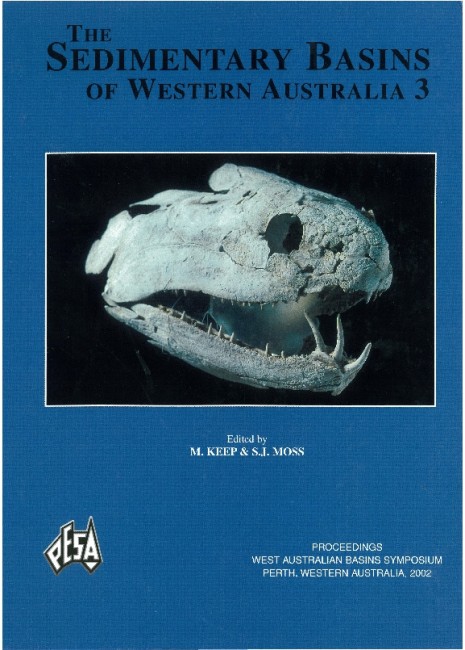Publication Name: The Sedimentary Basins of WA
Authors: J.N.F. Hull & C.M. Griffiths
Publication Volume: 3
Date Published: December 2002
Number of Pages: 40
Reference Type: Book Section
Abstract:
A high-resolution sequence stratigraphic study has been conducted to investigate the evolution of the Albian to Recent section of the Dampier Sub-basin. The section has been divided into sequences, the ages of which are constrained by biostratigraphic data. Further subdivision of these sequences into their constituent time-bounded units of strata, termed 'chronosomes', has resulted in a high-resolution basin-fill history that has been used to quantitatively analyse the controls on stratal architecture during basin evolution, especially during the Oligocene to Recent section, which is characterised by strongly prograding clinoforms.The Albian to Santonian sequences of the Dampier Sub-basin are characterised by deep marine, fine-grained,
mixed clastic-carbonate sediments that eventually become carbonate-dominated with widespread calcilutite
deposition at the end of the Santonian. During a major relative sea level fall at the beginning of the Campanian, a
thick clastic-dominated progradational unit was emplaced in the southwest of the Dampier Sub-basin with deeperwater equivalents in the remainder of the basin. The subsequent Campanian to middle Eocene succession is typified by further progradational siliciclastic sequences of which the shelfal sections of each sequence tend to be located along the Rosemary Fault. The final Eocene sequence records the change from siliciclastic- to carbonate-dominated deposition on the North West Shelf.
Following a major relative sea level fall at the base of the Oligocene, a strongly progradational carbonate margin was established which persists until the present day. In the Oligocene to late Miocene section, the clinoforms are primarily eustatically controlled and exhibit distinct progradational and aggradational episodes. The
progradational sequences are characterised by low sedimentation rates, a progressive increase in clinoform slope angle and a minor associated increase in height, while the aggradational sequences have higher sedimentation rates, exhibit a progressive decrease in clinoform angle and a marked increase in clinoform
height.
Collision of Australia with South East Asia in the Late Miocene resulted in the inversion of the Legendre Trend and accelerated subsidence of the area basinward of the hinge line of the Rosemary Fault. This tectonic reactivation
has caused a profound increase in sedimentation rates, and the resultant sequences show a much greater tectonic overprint than the preceding Oligocene to late Miocene sequences.


